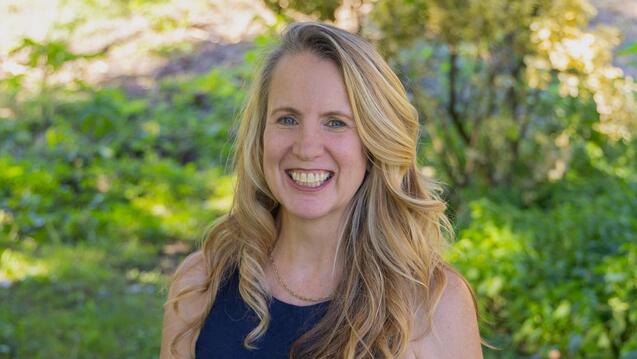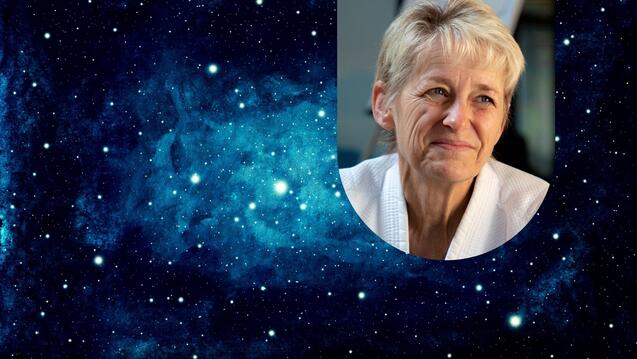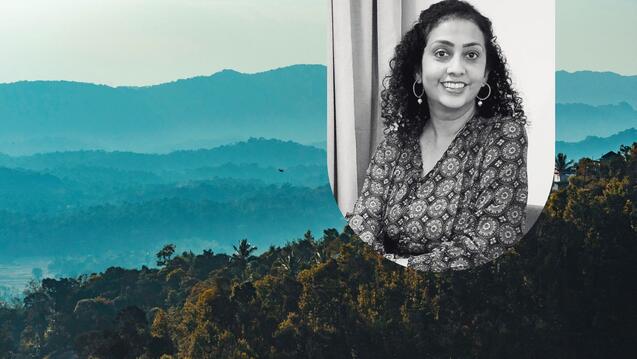Dr. Elizabeth Allison on training leaders for ecological change.

The Birth of Re-Genesis Encyclopedia
A lifetime of meticulous research, photography, and organization of a staggering quantity of mother-line evidence
Impelled by her determination to save ephemeral sites and artifacts from oblivion, Eahr Joan has devoted a lifetime to meticulous research, photography, and organization of a staggering quantity of mother-line evidence.
- Antonia Ruiz-Koffman, Librarian, CIIS
In the late '70s, Eahr Joan, an exchange student from an East Coast university, sat in a London coffee shop perusing a small map of the world. She placed her cup on England and drew a circle around it.
That area-East Asia, Europe, and North Africa-over the next 12 years would be the field for her life's work, the 2,000-page Re-Genesis Encyclopedia: Synthesis of the Spiritual Dark-Motherline, Integral Research, Labyrinth Learning, and Eco-Thealogy.*
Re-Genesis, conceived as a database, is an open-access encyclopedia to be housed in CIIS' Digital Commons institutional repository. It comprises 250 essay-length entries and thousands of images to support them. It documents the largely untold spiritual history of women across disciplines, cultures, and historical periods from 3 million BCE to 1 CE-significantly pre-dating monotheistic religions.
Eahr, an archaeomythology** archivist, alum (WSE '00), and reference librarian at CIIS, calls Re-Genesis the first and only archaeomythology encyclopedia/research resource. The work is a counternarrative of monotheism that expands the 21st-century worldview.
Re-Genesis was launched in late April at a CIIS Founders Day Symposium event honoring Eahr's roughly 40 years of research. A team is working to complete the process, which is expected to take a year.
This is the tale of how Re-Genesis came to be.
As far back as she can remember, Eahr had questions about the disparities in the ways that women were treated. From age four, in her small prairie town learning that little girls would have to suffer their whole lives for the sins of Eve, to the sexist ad campaigns of Madison Avenue, to a university philosophy department, the answers, she says, "were just not acceptable."
In 1978, Eahr recalls, her philosophy chair "told me that if I ‘continue to ask why females and members of other populations are not represented in the syllabi, you are then in the wrong department.'" That was the moment Re-Genesis was born-the moment she knew she had to choose another strategy and "not spend another breath on questions that people cannot answer with the knowledge that they have."
It wasn't anyone's fault, she says. "They were just telling me what they knew. All of this was the fodder for everything that is Re-Genesis. So, Eahr decided to begin with a retelling of Genesis.
London Calling
A month later, Eahr saw an ad in the student newspaper for an exchange program at London University in conjunction with the British Museum Library and immediately knew how her project might unfold.
Plus, there was some funding-a much- appreciated incentive for Eahr, then a 40-year-old welfare mother on food stamps. She was accepted, and "within a year I had dropped off my last daughter to college, got my ticket for London, and was on my way."
Eahr typed dissertations, cleaned and painted houses, and worked in bookstores and markets to save money for her fieldwork. "As soon as I had enough for the next trip, I quit my job and left. I think that's the matrilineal heritage of the prairie women I come from: We make it work-we're not wimps."
Over the next 12 years, Eahr estimates, she took 35 trips, never going beyond the boundaries of the circle she had drawn in the café. Her method, to photograph archaeological sites and museum artifacts-tethered to the narrative and informed by images-was modeled on the work of archaeologist Marija Gimbutas, who posited the thesis that the Neolithic European culture was female-centered and worshiped a Mother Goddess as giver of all life.
Eahr had a community of fierce, supportive women, including her mentor, Asphodel Long, a well-known activist and feminist scholar who had been part of the London underground railroad in World War II.
As Eahr says, "I am the last person who should be doing this. I hate driving and I'm no good at maps!" And though she iterates that every piece of the endeavor is impossible, she has never doubted the serendipity of events and the perfect timing of the project.
"The 1980 to 1992 fieldwork couldn't be done today. Much of the material I photographed doesn't exist anymore in and outside of the museums," she says. "And, I could never go back to these places as an American and as a woman. It's way too dangerous, and they'd never give me a permit."
Previously, during her time in Manhattan, Eahr actively engaged in civil justice work and education rights, fundraising for libraries, NOW, ERA, ESL, and New York City's Head Start program. She also cocreated the Feminist Spiritual Community Church with philosopher Elly Haney.
At a party in the early '90s, Eahr met Dr. Eleanor Gadon, scholar and founder of the Women's Spirituality program, who eventually persuaded her to come to CIIS. Eahr, who already had an offer from an Ivy League university, based her decision on which grad school would be the best fit for both the encyclopedia and the photographic collections, and which would provide the best learning and integral worldview environment for Re-Genesis.
"I have amassed this amazing collection-just miracles all the way to making this happen-and my job now is to shepherd this project to the best of my ability." Eahr felt that she had put the project in the very best environment. "Not only CIIS, but also San Francisco afforded the diversity of the communities in which I had lived in London."
One Door Closes...
In 2008 Eahr was done with the fieldwork: She had had a knee replacement and could no longer manage the weight of the cameras. The fieldwork thus ended but not the research, writing, rewriting, editing, and scanning and downloading of thousands of slides, images, and hyperlinks, etc.
For Re-Genesis and Eahr the grad student, adjunct faculty member, and librarian, a job she has held since her student days, CIIS was indeed a homecoming.
For its users, Eahr believes that Re-Genesis can also be a homecoming. "When you have a question, go back to religion and spirituality. If that seems confusing to you, rightly so. If you have a question relating to labyrinths and mazes-if that seems confusing-it should be, because it is misused about 80% of the time. You can go to Re-Genesis and get clarification.
If you have confusion about monotheistic canonical religions, you can go here. Or about Genesis-try this variable. You may not like it, but you will definitely get another interpretation."
The project has been "a total gift and an impossible one. The fact that we ever got this far was highly improbable," she says. "There aren't a lot of 80-year-olds doing this kind of work. I don't know about what happens at 81 or 82," Eahr says. "For now, I'm just gonna have a party."
* Feminist spirituality is understood as Eco-Thealogy (or nature-goddess), in which all life forms in the cosmos are interconnected and immanently sacred, including the female. For more on this and Labyrinth Learning, see https://www.youtube.com/watch?v=3jbaETPatjk.
**Archaeomythology is a transdisciplinary methodology pioneered by archaeologist Marija Gimbutas, which incorporates a consideration of linguistics, mythology, history, and folklore, as well as archaeology.
Related Academic Programs
M.A. in Women, Gender, Spirituality, and Social Justice and Ph.D. in Women's Spirituality
Related News
Ginny Whitelaw brings decades of experience to the Blue Sky Leaders Certificate, helping leaders move beyond ego and into deep connection and purpose.
A graduate’s journey integrating Eastern contemplative wisdom with Western depth psychological frameworks.



